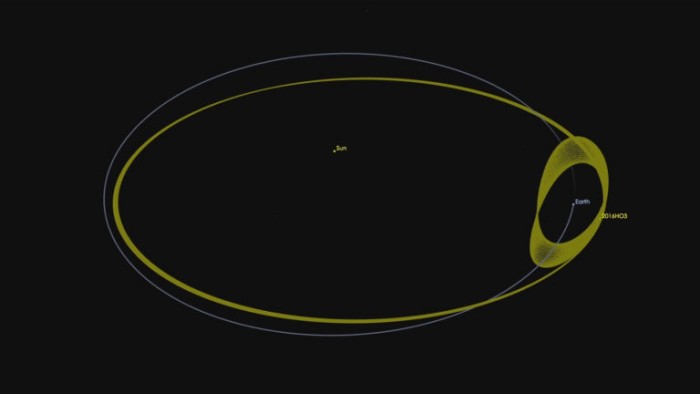(By Whitney Webb of Trueactivist.com) The Earth has a newly discovered companion “mini-moon” that follows our planet throughout its yearly journey around the Sun. NASA recently announced that a small asteroid, known as 2016 HO3, was discovered in orbit around the Sun while also circling Earth. Though it has earned the nickname of a “mini-moon,” the asteroid is too far from the Earth to be considered a true satellite of the planet, like the Moon. For now, it has been classified as a “quasi-satellite.”
Quasi-satellites closely following Earth’s orbit is by no means unprecedented. More than a decade ago, asteroid 2003 YN107 followed an orbit similar to that of the newly discovered object for a short time but has since left Earth’s vicinity, remaining there only a short time. However, this new asteroid is considered to the “best and most stable” example of this phenomenon. Scientists estimate that the asteroid has been present for most of the past century and estimate that it will remain in its current orbit for several centuries more.
However, the asteroid’s orbit has a unique orbital pattern compared to Earth, causing NASA to remark that the object appears to be “caught in a game of leap frog with Earth.” It spends approximately half of its orbit closer to the Sun than to Earth, which causes it to fall behind. The asteroid also has a slightly tilted orbit that causes its to “bob up and then down” once a year through Earth’s orbit. It also slowly twists backward and forwards over multiple decades.
“The asteroid’s loops around Earth drift a little ahead or behind from year to year, but when they drift too far forward or backward, Earth’s gravity is just strong enough to reverse the drift and hold onto the asteroid so that it never wanders farther away than about 100 times the distance of the moon,” said Paul Chodas, manager of NASA’s Center for Near-Earth Object (NEO) studies in Pasadena, California. “The same effect also prevents the asteroid from approaching much closer than about 38 times the distance of the moon. In effect, this small asteroid is caught in a little dance with Earth.”
For anyone interested in following the path of the asteroid or any other upcoming close approaches, the Center for NEO Studies website has a complete list of such events, along with data on the orbits of other known NEOs. In addition, you can follow the center’s “Asteroid Watch” on Twitter for news and updates on any and all asteroids in proximity to Earth.
